If you want to practice a pose that is good for your body on many different levels, then it is definitely a pose called the big toe pose. Padangusthasana translated from Sanskrit means Pada or foot and Angustha or thumb.
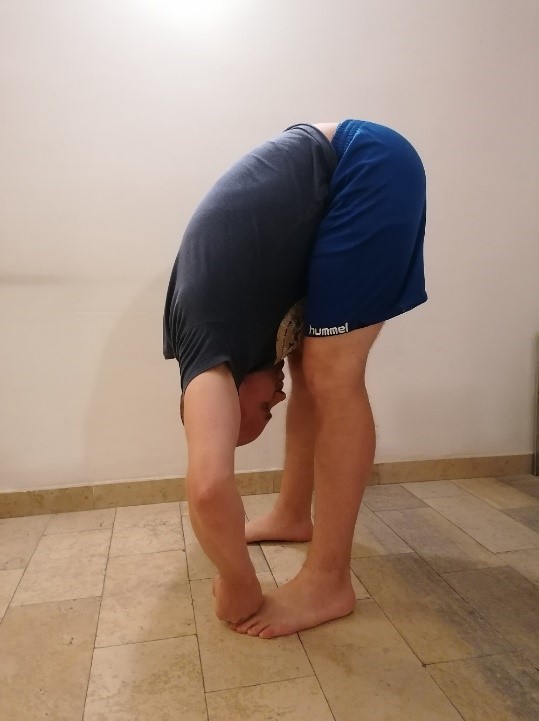
Padangusthasana
When it comes to this pose, due to the fact that it has several different variations, it should be kept in mind that it can be practiced as one short vinyasa.
That vinyasa can be started with the basic pose, which slowly continues to the standing variants, after which it is transferred to the lying poses.
This whole mini-series ends with the last pose which involves the sitting balance pose.
Benefits and Limitations
However, before we begin a more detailed explanation of each of these poses, we should familiarize ourselves with the benefits of the pose itself, its variations, and who should not do this pose.
Practicing a Padangusthasana, the practitioner achieves stretching of the calves and groin on a physical level. There is also fine stretching and strengthening of the back. By practicing this pose and its variations, the practitioner strengthens his core and thighs.
This leads to strengthening of the knees and a better sense of balance. This pose is good for improving the work of the entire digestive tract. In addition to stretching the groin, this pose is also great for hip flexibility. The pose itself and its variations are thought to have a very calming effect on the brain and heart rhythm.
This pose is not suitable for people who have arthritis, chronic diarrhea, headaches, groin, quadriceps or back injuries. If they still want to try practicing this pose and its variations, they can definitely try it, but only with the permission that they receive from their doctor. Pregnant women should not practice this pose
People who had groin, neck, or knee surgery should avoid practicing this pose until further notice.
Padangusthasana is definitely recommended for people who are dealing with anxiety, stress, lower back pain, liver and kidney problems, migraines, and indigestion.
Practicing Positions and Variations
When you enter the basic pose, it means first of all that your feet are hip-width apart. It is very important that the downward bend occurs from the hips and not from the waist.In that way, you work on the mobility and flexibility of your hips. You enter the lower pose with exhalation, and go up with inhalation.
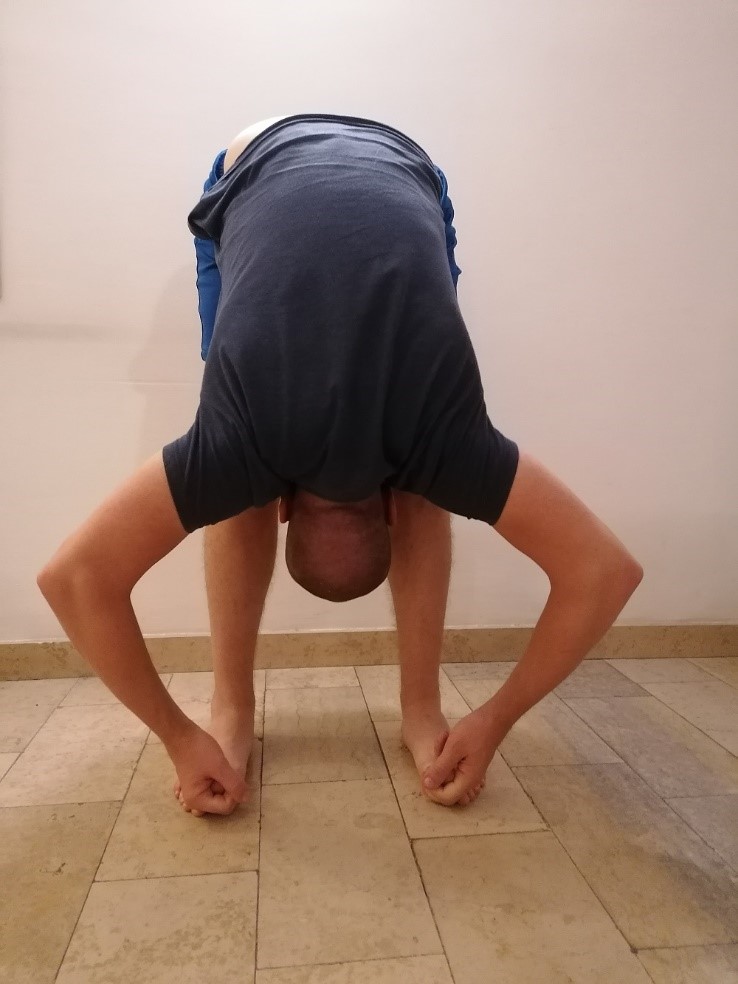
Padangusthasana
It is very important that your legs are active, your knees are engaged, and your thighs and calves are tight. With the index finger, middle finger, and thumb of the right and left hand, grasp the big toe from the inside.
You can stay in the lower pose for a couple of breaths. However, you can also practice a variation within the basic pose. The variation means that you stretch your back forward from the lower pose, of course everything within the limits of your body’s comfort. From this pose, as I mentioned before, you come out with an inhale.
After the basic pose, you can continue practicing the other variations. In that way, you start a small series of vinyasa. In vinyasa, the right side of our body is always practiced first, followed by the left side.
The standing variations, in addition to the fact that they are excellent for strengthening the legs, have the effect of improving the sense of balance. In all these upper poses, it is important that the leg muscles are fully engaged, both the standing leg and the stretched leg.
The first pose implies that one leg is stationary, while the other leg is fully stretched forward and that we hold it by the big toe. In case you can’t hold the big toe, feel free to use a yoga strap.
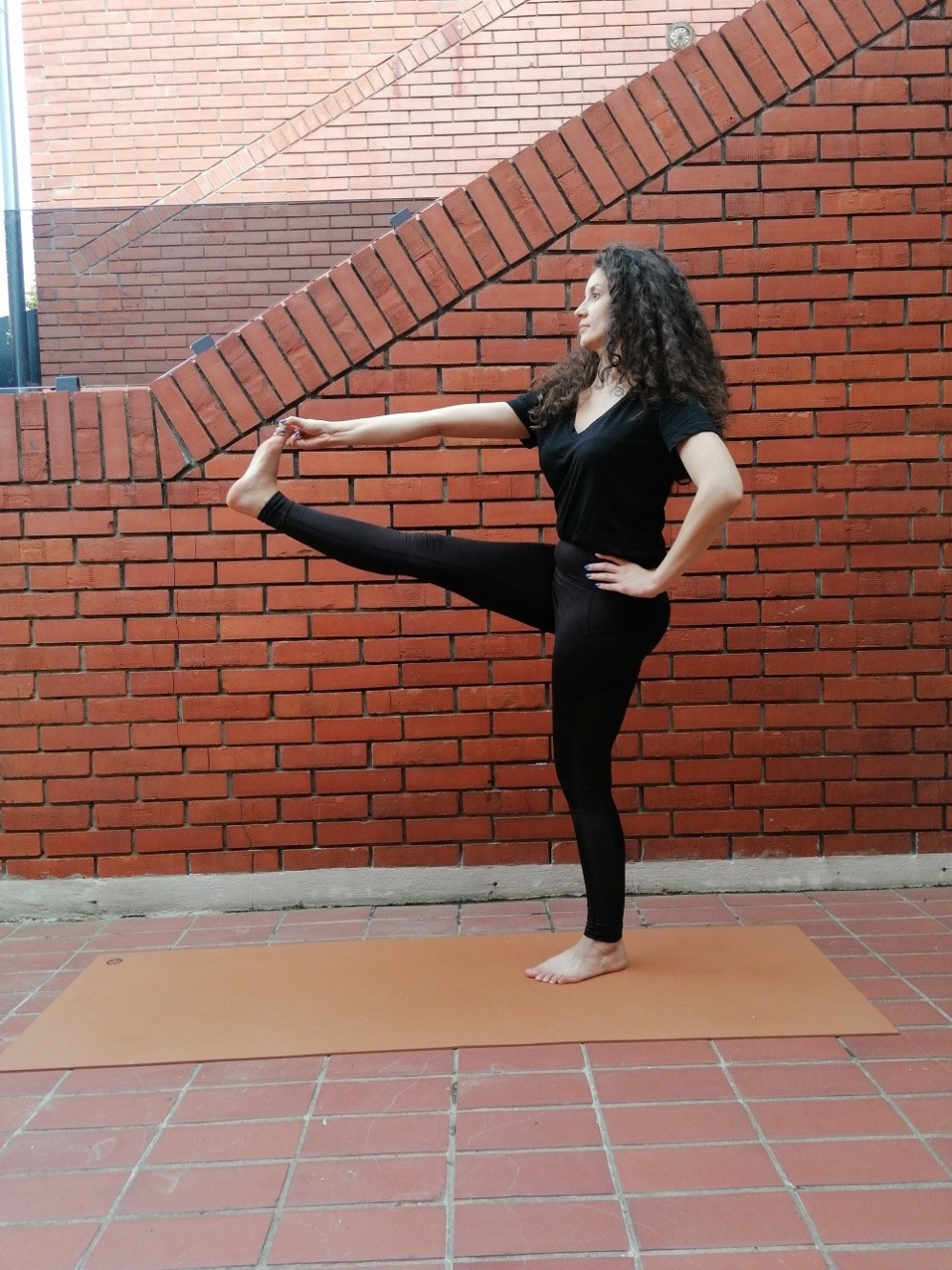
Utthita hasta padangusthasana A
The second pose is the moving of the outstretched leg to the side. In that way, we also work on improving the mobility and flexibility of the hips. If you used a belt for the previous pose, you will need it for this pose as well.

Utthita hasta padangusthasana B
The third pose implies that the leg is stretched forward again. In this variation, you try to touch the shin of the extended leg with your chin.
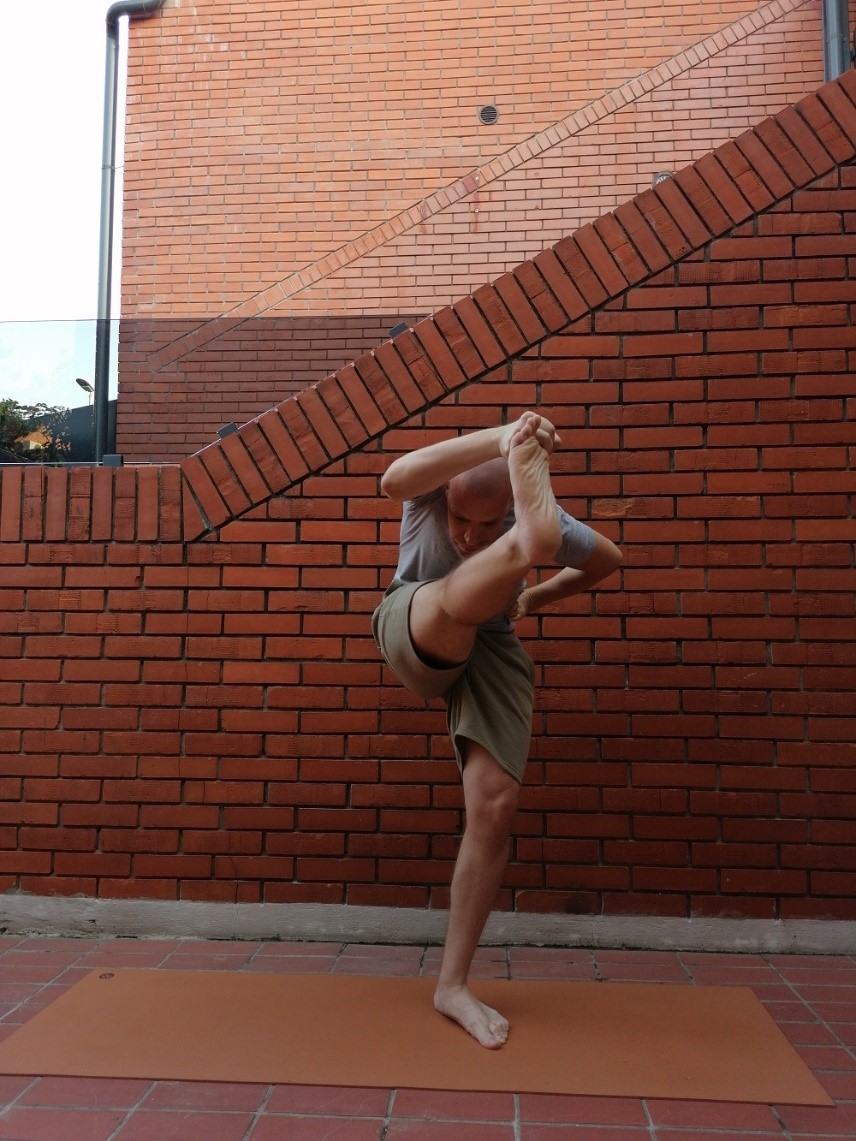
Utthita hasta padangusthasana D
The fourth pose is raising the outstretched leg as high as you can, while the palms of both hands are on your hips. In that way, you strengthen the thigh muscles of the outstretched leg.
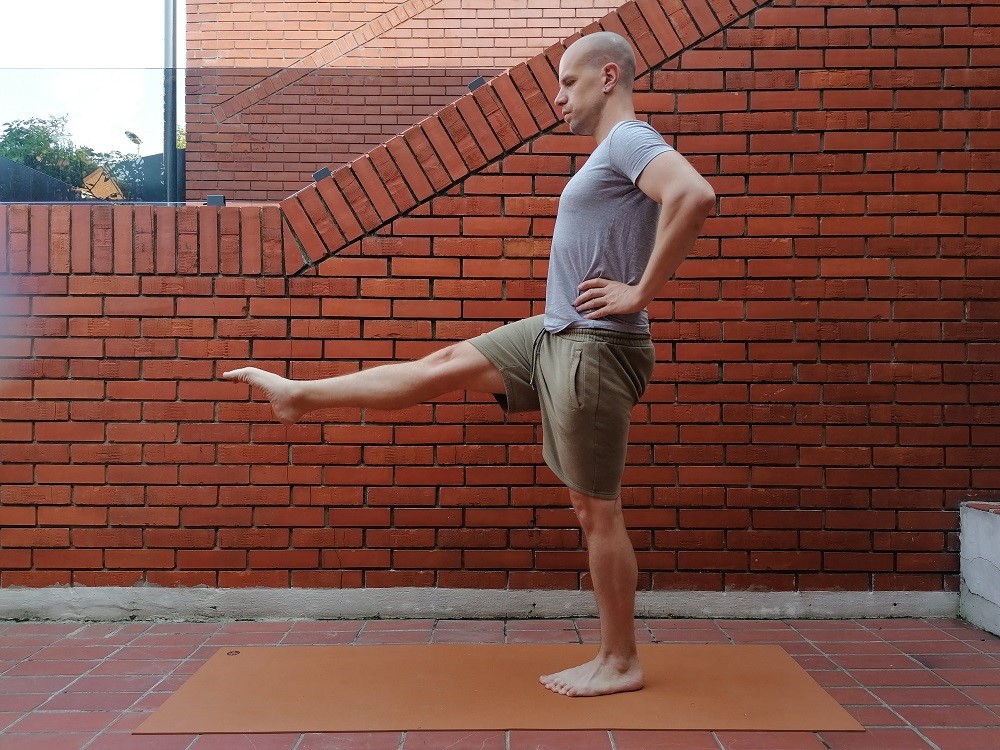
Utthita hasta padangusthasana C
In all these variations, the gaze is at the tip of the nose. The same applies to the basic pose, but also to the following poses.
From a standing pose, you can go down to your yoga mat and lie on your back, since the continuation of this mini vinyasa involves lying poses.
The first lying pose is executed with your left leg fully extended on the yoga mat, while the right leg is raised up to ninety degrees. Take the thumb from the inside with the index finger and middle finger. If you cannot raise your right leg all the way to ninety degrees, use a yoga strap. Place it around the right sole of your foot and extend it as much as necessary, all with the goal of keeping your right leg fully straight and active (calf and thigh muscles tight).
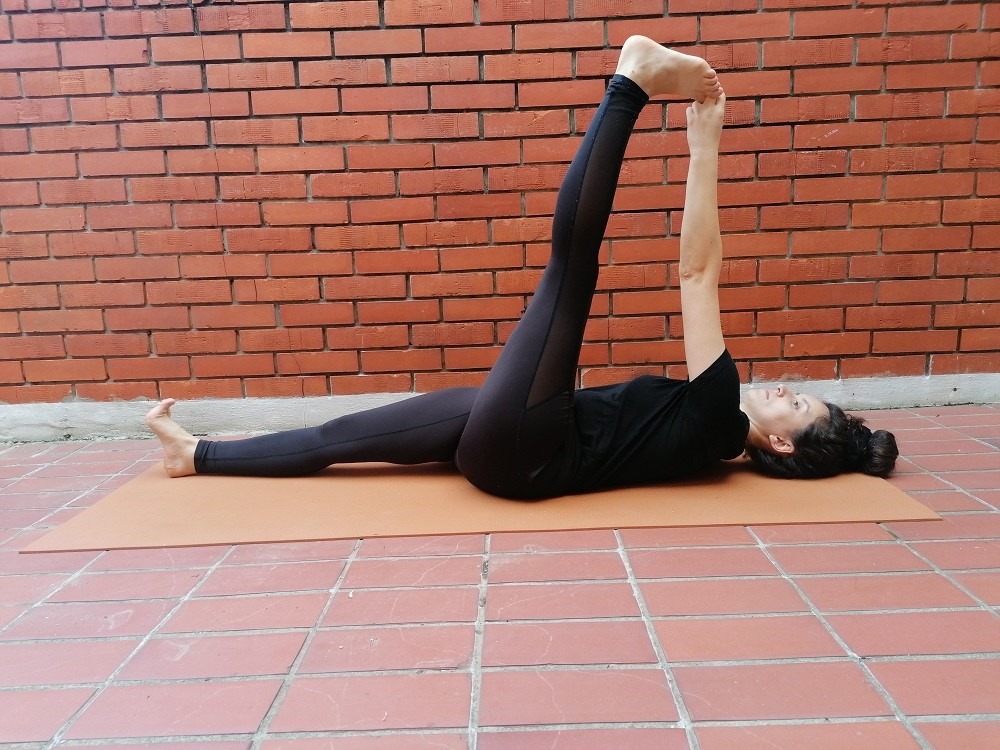
Supta padangusthasana A
The second pose implies a slight transition from the first pose by lowering the right leg to the right side.
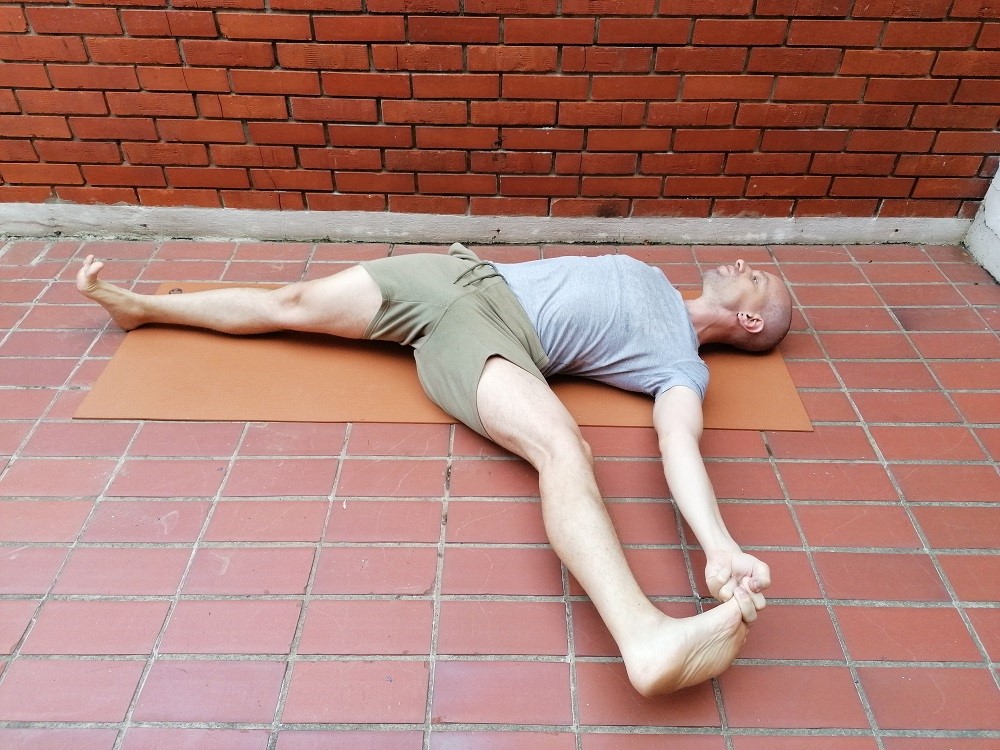
Supta padangusthasana B
The third pose in these lying variations involves lowering the right leg to the left side. In that way, there is additional stretching of the groin, tendons, and above all, the right hip. Practice this pose with a lot of awareness. Of course, this remark also applies to all other poses.
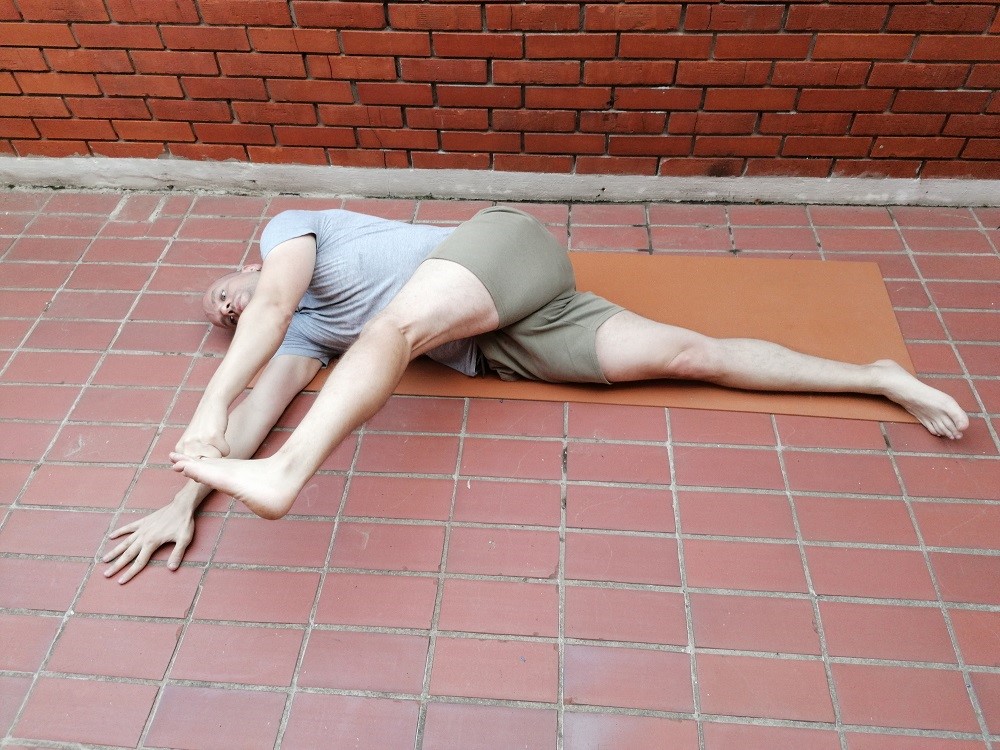
Supta padangusthasana C
The last pose in this mini vinyasa series that is related to the Padangusthasana pose is the lower balance pose. In this pose, you are supported on your saddle halves. The practitioners who have a pronounced coccyx will have difficulty staying in the same pose. It is certainly important that both of your legs are fully straightened, stretched, and lifted upwards. With the thumb, index finger, and middle finger, you grasp the big toes from the inside. This pose involves activating your stomach muscles. The view is also at the tip of the nose. If you cannot fully stretch your legs, use a yoga strap.
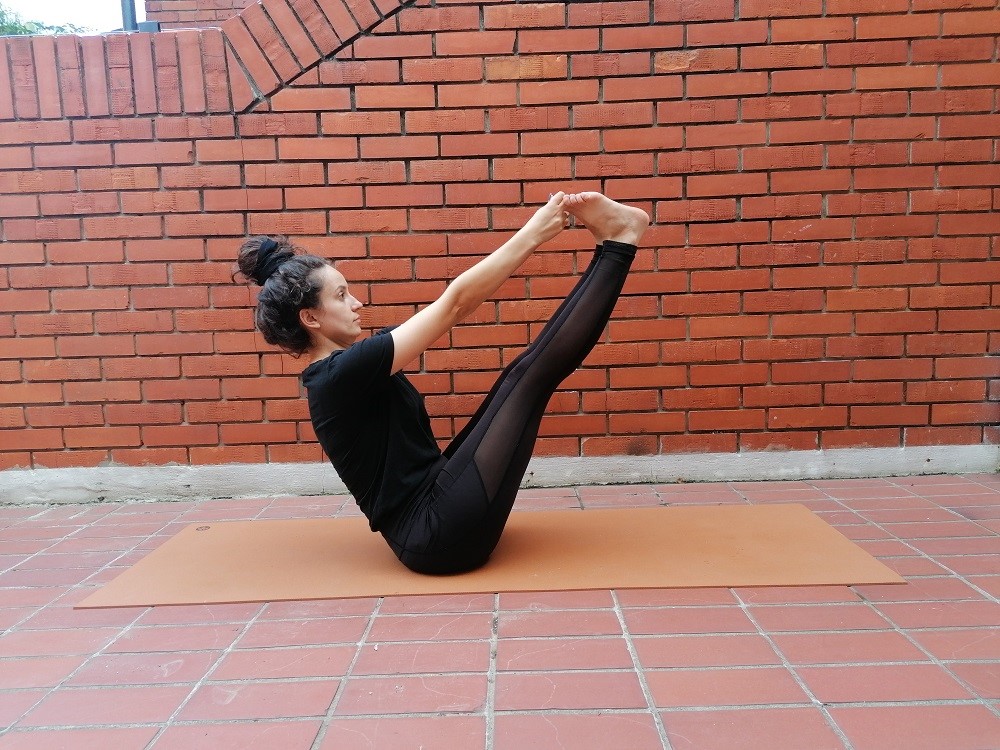
Ubhaya padangusthasana
Conclusion
Padangusthasana and all its variations are primarily good for stretching and strengthening your legs. You should certainly not forget the importance that these poses have for calming your thought process. Also, the basic pose is excellent for improving the brain circulation.
As always, the rule is that if you haven’t practiced these poses before, start practicing them first with the presence of an experienced yoga instructor or teacher. With their knowledge and experience, you will master these poses easier and faster.







